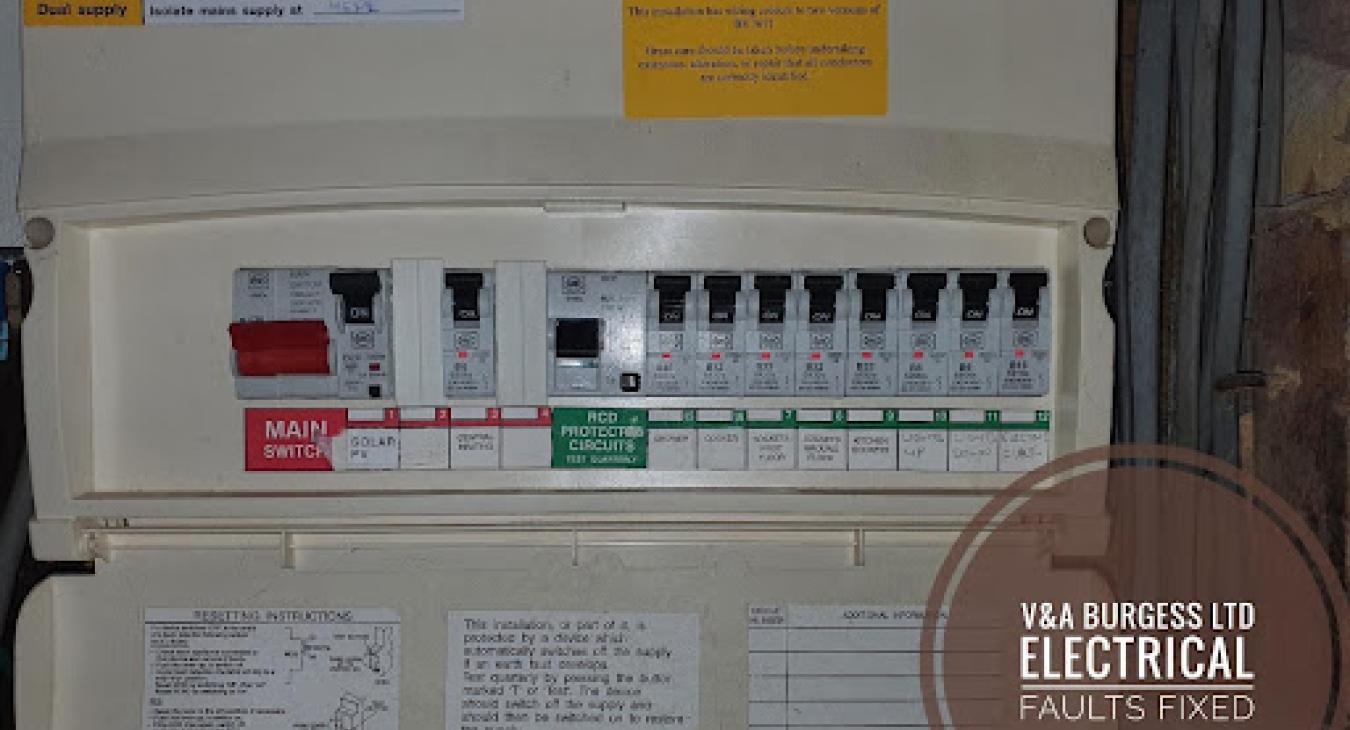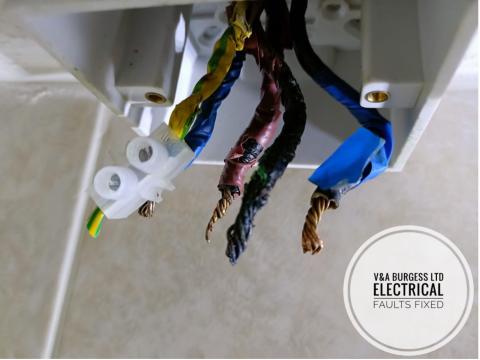
1) What is a house fuse box?🏡
Every home should have a HOUSE FUSE BOX located somewhere in the property. The fuse box has several names such as, electric box, consumer unit, distribution board, trip switch box, fuse board and consumer box. This box always has the same purpose regardless of the name you know it by and its purpose is to receive the incoming mains power supply and divide this up safely and efficiently into electrical circuits and send the electricity around your home. The fuse box used to contain either rewireable fuse wire type fuses or cartridge fuses similar to the ones found in plugs of appliances. More modern fuse boxes are known as consumer units and contain ‘trip switches’ rather than fuses as they are more convenient and offer more safety features than the older style of ‘electric boxes’.
Back to top2) What does a consumer unit look like?🔎
There are different styles of consumer unit as we can see from the photographs. A consumer unit is usually a rectangular box made of either plastic or metal and containing several switches. It is housed somewhere in the home such as near the front door, under the stairs, in the garage or front room. In fact, these boxes can appear almost anywhere. In new homes they must be somewhere accessible to all persons so tend to be mounted at a height that people can easily get to and be somewhere more accessible. Older types of consumer unit may have had a master ‘main switch’ like the one below that trips when it detects an electrical fault. In newer consumer units this is not so common as it can cause inconvenience to the user of the electrical system when there is a problem.
3) How long does a fuse box last?🗓️
Old style fuse boxes with cartridge fuses or fuse wire are now old technology and have served their purpose. There are many of these types of fuse box still in use today and many continue to provide service however, there may be several key safety features missing from these types of fuse box and, as a minimum, you should have an electrician come out to inspect your box and electrical system. The process of checking an electrical system in this way is called a Periodic Inspection and the document produced from this is called an Electrical Installation Condition Report. Generally, fuse boxes and consumer units can last a few decades if looked after and maintained. Switches and electric shock protection devices can fail leaving homes vulnerable so if your HOUSE FUSE BOX has not been checked recently then it’s probably a good idea to have it inspected by an electrician.
Back to top4) What type of fuse box should I get?⚡
The best type of consumer unit to have installed will depend upon your electrical installation and its requirements and your electrician is normally best placed to advise on this. Generally speaking, these days, the RCBO fuse box is the best type to have installed. Let me elaborate. Electric shock protection in the consumer unit comes in the form of a Residual Current Device (or RCD for short). These devices sense when someone may be having an electric shock and act to turn off the supply to the affected electrical circuit(s). An RCD usually protects several electrical circuits at once which, in modern homes, is no longer ideal in lots of cases. When an RCD trips it can disrupt the power to much of the property at once leaving you without many appliances and lights. The RCBO aims to stop this. We can see that all the photographs contain a consumer unit with an RCD / RCCB device in them (same thing). The device is the double wide one with a test button on it. The older style box has an RCD main switch with a lever on.
5) The RCBO✅
The RCBO is an all-in-one type device that protects one circuit from overload, electrical faults and offers electric shock protection at the same time. It is the most convenient form of device for electrical installation users.
It offers all the protection of an RCD and circuit breaker without the inconvenience of several circuits losing power. As the device only monitors one circuit at a time, it only trips off one circuit when there is an issue. These devices are slightly more expensive than the RCD / circuit breakers type set up but much more convenient and future proof.
6) How much is a house fuse box?💷
A new consumer unit cost will depend on the number of circuits needed, the size of the property and whether any pre-existing faults exist. The older the installation the more likely there are to be electrical issues that require rectification before the new consumer unit can be fitted. The larger the property the more circuits there are and the bigger the box will need to be fitted and more time it will take to carry out the testing. Generally smaller consumer units are cheaper to have fitted than larger ones and smaller houses cost less to replace a consumer unit than with larger properties. A pre consumer unit replacement test will cost 195-350* which will highlight any issues that need fixing before the new consumer unit is installed. The new consumer unit will likely cost between 600 and 1000* dependant on the size and whether any issues need fixing.
Back to top7) How long does the job take?⏱️
Anywhere from 1 to 2 days, possibly longer if there are in depth remedial works such as broken circuits, faulty earthing or partial rewiring needed.
(*at the time of writing)
📞 01925 595 980 (Warrington)
📞 0151 351 4011 (Liverpool)
📧 Enquire online
💻 Visit our website
Back to top









